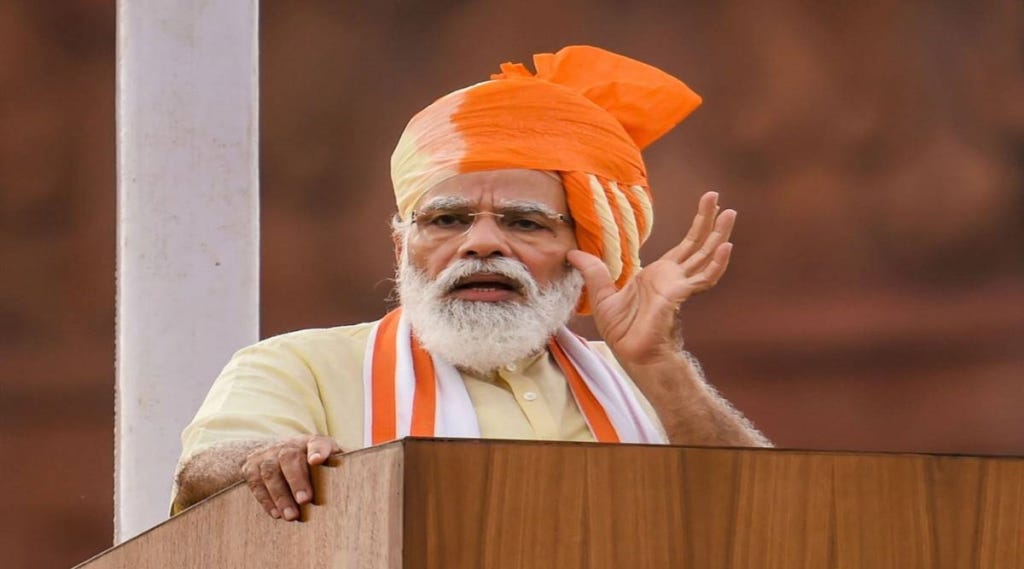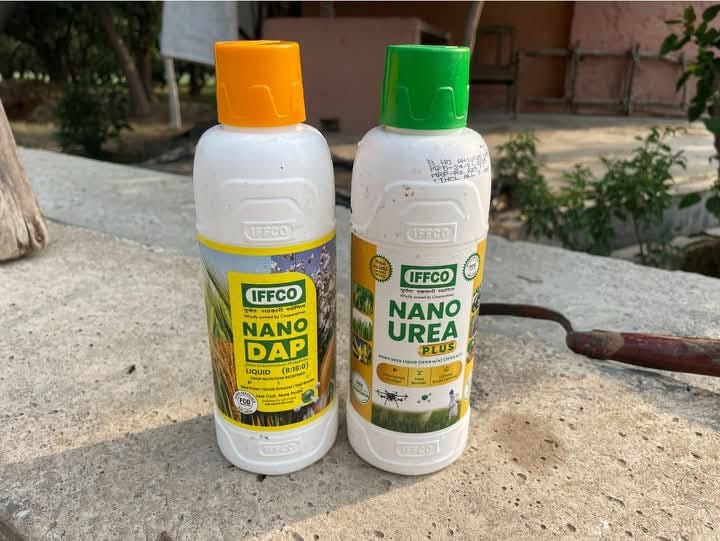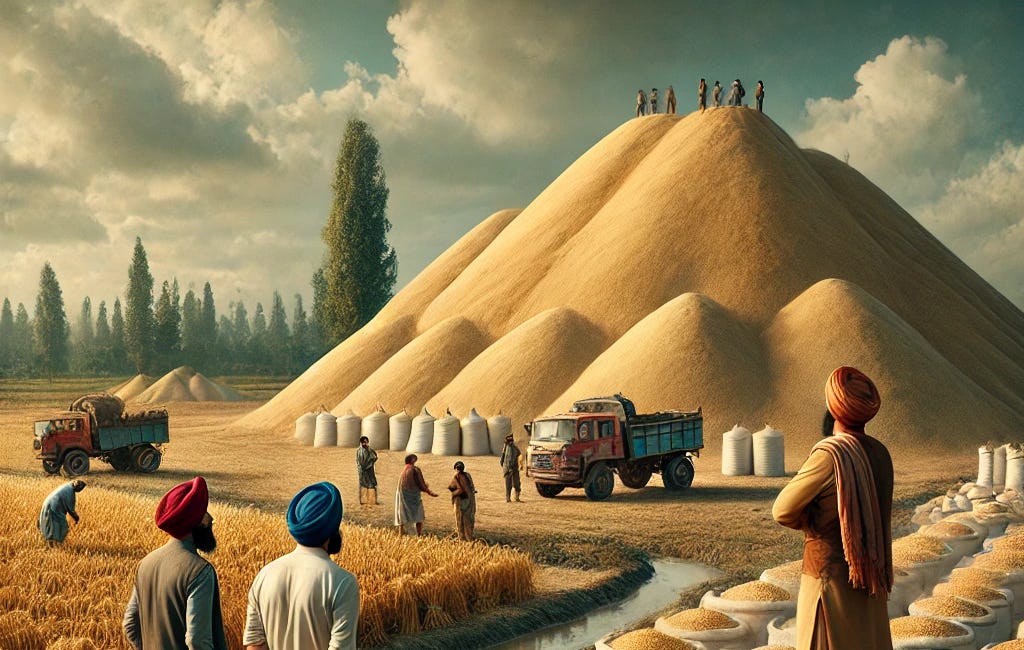Nano Fertiliser Experiment—Mega Losses for Punjab & Haryana Farmers
A technology hailed as revolutionary must carry AAA-grade evidence & peer reviewed independent studies; anything less dumps the entire risk onto the very farmers whose bumper harvests feed the nation.
By Karan Bir Singh Sidhu
Retired IAS Officer | Former Special Chief Secretary, Punjab
With over four decades of distinguished public service, KBS Sidhu has been deeply engaged with issues of agriculture, agronomy, and rural economy, with special reference to Punjab. As a seasoned policymaker and analyst, he brings a farmer-centric lens to national debates on agricultural reform and technological interventions in Indian farming.
Nano Fertiliser Experiment—Mega Losses for Punjab & Haryana Farmers
Between them, Punjab and Haryana sent well over 470 lakh tonnes of grain to market in the latest crop year—Punjab alone delivered about 214 lakh tonnes of paddy and 127 lakh tonnes of wheat, while Haryana chipped in roughly 58 lakh tonnes of paddy and 75 lakh tonnes of wheat. These numbers keep India’s public-distribution system afloat and cement the two states’ status as the twin engines of the Green Revolution. Yet the same heartland is now paying heavily for an aggressively promoted, still-unproven nano-fertiliser drive that has slashed yields, inflated input bills and, perhaps most damaging, cracked farmers’ faith in the very institutions designed to protect their livelihoods.
1. From Touted Miracle to Field Misery
When Prime Minister Narendra Modi virtually inaugurated IFFCO’s first Nano-Urea (Liquid) plant at Kalol on 29 May 2022, he stated that “a small bottle (500 ml) of nano urea is equivalent to one 50 kg bag of granular urea currently used by farmers.” Nano-DAP was rolled out with the same revolutionary zeal. Yet two-season field trials by Punjab Agricultural University (PAU), Ludhiana have since documented yield drops of 21.6 % in wheat and 13 % in paddy, with similarly discouraging results for nano-DAP—findings that flatly contradict the official narrative ( nanourea.infinancialexpress.com).
It is doubly troubling because IFFCO, now a zero-equity cooperative with no Central-government shareholding, appears to have leveraged its market dominance—and perhaps the Prime Minister’s goodwill—to broadcast claims that have not yet cleared the bar of exhaustive, independent validation. While the Indian Council of Agricultural Research (ICAR) has coordinated limited multi-location trials and offered cautiously positive feedback, ICAR itself requires at least three full crop seasons of data before a fertiliser is given an unconditional green light—a threshold nano urea has yet to meet (downtoearth.org.in).
In short, without unequivocal, peer-reviewed and explicit and unconditional endorsement from ICAR or other independent bodies, IFFCO’s aggressive promotion risks misleading both policymakers and the very farmer-owners of the cooperative it was created to serve.
2. Hidden Economics—When “Cheap” Costs More
Labour arithmetic is brutal: one worker can broadcast granular urea over an acre; nano sprays need four-plus labourers, pushing per-acre spraying costs to about ₹2,000.
Multiple foliar rounds replace a single soil application, trebling labour and product outlay.
Agronomists calculate true formulation costs to be almost 10 × higher per unit of usable nitrogen than granular urea once field-level doses are matched.
3. Compulsion, Confusion and a Widening Trust Gap
Across cooperative depots from Sirsa to Sangrur, farmers report being “nudged” to buy nano bottles with every bag of conventional fertiliser. Many who experimented now refuse repeat purchases, fuelling a perception that sales rely more on bundling than on performance.
Speaking exclusively to The KBS Chronicle, Dr B.S. Sidhu, former Director of Agriculture, Punjab, remarked:
“It is puzzling that without an explicit endorsement by PAU, Punjab MARFED—our state’s flagship farmers’ cooperative—is tagging the sale of liquid nano fertiliser bottles with conventional fertiliser bags through PACS (Primary Agricultural Cooperative Societies). Since PACS operate strictly on an ‘in-kind supply’ policy, this denies farmers the choice they deserve. Moreover, IFFCO dealers seem to be engaging in similar marketing practices, which, while perhaps not illegal, are certainly unethical.”
This statement underscores the growing unease within the independent agricultural experts over coercive or non-transparent distribution strategies—especially for a product still undergoing scientific scrutiny.
4. Adoption Stalls Despite Mega-Capacity
Manufacturers can now churn out 289 million bottles a year, yet FY-2025 saw sales of barely 26.5 million nano urea and 9.7 million nano DAP bottles—a fraction of capacity and a rounding error beside Punjab-Haryana’s fertiliser demand. Dealers candidly admit pleading with farmers to “at least try one bottle.”
5. Practical Hurdles on the Ground
Sprayers, masks, water carts, weather windows: nano application is precision work that smallholders find risky. A 12-hour rainfall can wash away a spray, forcing a redo. Without robust extension back-up, many farmers fall back on the reliability of soil-applied bags.
6. Harvest & Food-Security Shock
For two states that supply a lion’s share of public-distribution grain, a one-fifth cut in wheat yield is not just a farm-gate loss—it jeopardises regional food security and depresses household nutrition through lower grain-protein.
6A. International Red Flags: Danish Scientists Warn of “Large-Scale Yield Losses”
A peer-reviewed analysis led by the University of Copenhagen’s Nanotechnology group scrutinised IFFCO’s nano-urea claims and concluded the product is “a poorly described fertiliser with no scientifically proven effects.” Their paper warns that marketing a 500-ml, 4 %-nitrogen solution as equal to a 50-kg, 46 %-nitrogen bag could spark “large-scale yield losses with serious consequences for food security and farmer livelihoods.” The Danish team also criticised trial protocols, noting that most experiments lacked proper controls or independent replication—red flags that, they argue, should have halted commercial rollout.
7. Accountability & Due-Diligence Deficit
Ministry of Chemicals & Fertilisers / Department of Fertilisers fast-tracked commercial release without insisting on peer-reviewed, multi-location evidence.
Regulatory and research agencies allowed manufacturer data to dominate approval files, sidelining independent trials.
Cooperatives and state marketing bodies amplified claims and used the Prime Minister’s image and goodwill to push a product still lacking conclusive proof of superiority.
IFFCO and partner firms prioritised marketing scale-up over transparent science, creating expectations their own field data cannot yet meet.
The outcome—thousands of farmers absorbing real-world losses—makes a compelling case that India’s fertiliser policy needs a “science first, slogan later” reset.
8. Fertiliser Shortages Amplify Desperation
Punjab has lately received just 58 % of its DAP allocation, leaving growers queued outside depots and more susceptible to alternative pitches. In this vacuum, nano bottles were offered as the silver bullet—only for many users to discover the gun still empty.
9. A Farmer-Centric Recovery Blueprint
End conditional sales; let growers choose freely.
Compensate documented yield loss through a fast-track claims window using university data as benchmarks.
Guarantee timely supplies of bagged urea and DAP every sowing season.
Mandate independent, peer-reviewed, multi-season trials before any new input is cleared for nationwide roll-out.
Rebuild extension services so advice is scientific, not sales-driven.
Promote diversification and soil-health investments for long-term resilience.

Lessons Learnt, with Lesions—Due Diligence Before Disruption
Nano fertilisers may yet carve out a niche in Indian agriculture—but only after rigorous, transparent science proves clear, repeatable advantages over conventional nutrients across diverse agro-climates. Until then, riding on the Prime Minister’s image or any leader’s goodwill to push a half-tested product is potentially a breach of public trust. Responsibility for the current losses sits squarely with the IFFCO Board of Directors that green-lit its premature commercialisation, the expert bodies that waved it through without exhaustive scrutiny, and the entities like Punjab MARKFED that chose marketing velocity over scientific validation.
A technology hailed as revolutionary must be backed by AAA-grade scientific evidence—not just marketing momentum. Anything less unfairly transfers risk onto the very farmers whose bumper harvests have historically secured the nation’s food security. In Punjab and Haryana, those risks have already materialised in the form of real yield losses, diminished grain quality, and mounting debt. Farmers in these states have paid the price—and they deserve not just recognition, but restitution.
Going forward, there must be an iron-clad guarantee that any future “innovation” reaches farmers’ fields only after rigorous, transparent, and independent scientific validation—not slogans or symbolic launches. The top political executive and the Agriculture Departments of the respective state governments cannot afford to remain complacent merely because farmer cooperatives like IFFCO (as manufacturer) or Punjab MARKFED (as distributor) are presumed to be trusted institutions. Administrative accountability does not end at the cooperative's door. When public trust and farmer livelihoods are at stake, scientific due diligence must be non-negotiable—and enforced uniformly across both public and cooperative sector entities.
Postscript: IFFCO—Not a Government PSU
A widespread misconception persists that the Indian Farmers Fertiliser Cooperative Limited (IFFCO) is a central government public sector undertaking (PSU). In reality, IFFCO is a fully autonomous, multi-state cooperative society, wholly owned and governed by 35,617 member cooperative societies spread across India—from village-level primaries to state and national federations.
Once majority-owned by the Government of India, IFFCO underwent a structured transition between 2002 and 2004, during which 100% of the government’s equity—then valued at ₹289.61 crore—was retired and repatriated. This transformation was made legally possible through amendments to the Multi-State Cooperative Societies (MSCS) Act, 2002, and through changes to IFFCO's own bye-laws (notably Bye-law No. 6).
As of today:
Government equity shareholding in IFFCO stands at 0%
IFFCO is not under the administrative control of any central ministry, including the Ministry of Chemicals and Fertilizers
It is not subject to audit or oversight by CAG, CBI, or other government vigilance bodies
All decisions rest with its cooperative membership and elected board
While one Central Government nominee sits on the IFFCO board, this is for coordination purposes only and does not constitute administrative control or ownership.
With a net worth of ₹25,775 crore, and consistent dividends to its cooperative members (20% for 23 consecutive years), IFFCO is a rare success story of farmer-owned, professionally managed cooperative enterprise. It is not a PSU, but rather a people’s institution built by, and for, Indian farmers.
Yet, it is, however, exceedingly unfortunate that an institution enjoying a near-monopoly or at least a dominant position in India’s fertiliser market is being seen to exploit the very farmers whose cooperative societies are its shareholders. When coercive sales tactics and scientifically unproven products are pushed in the name of innovation, IFFCO risks betraying its founding ethos and the trust of its own owners—the farmers of India.
Double Whammy for Punjab Farmers: Unsold Paddy and DAP Fertilizer Shortage
Double Whammy for Punjab Farmers
Sources
PM Modi’s launch-day “500 ml = 50 kg” claim financialexpress.com
Punjab paddy production 2023-24 (214 LMT) pau.edu
Punjab wheat arrivals 2025 season (127 LMT) millingandmillers.com
Haryana paddy procurement 2023-24 (58 LMT) prharyana.gov.in
Haryana wheat procurement 2025 season (75 LMT) gleaf.in
PAU study: 21.6 % wheat & 13 % paddy loss with nano-urea downtoearth.org.in
PAU study: 16.1 % wheat loss with nano-DAP downtoearth.org.in
Danish scientists’ critique of nano-urea claims researchprofiles.ku.dk
Karnal case study on forced sales & labour cost spike theprint.in
FY-25 nano-urea adoption (26.5 M bottles vs 289 M capacity) financialexpress.com







Agricultural sector requires complete freedom. Farmers must be free to choose their inputs, final product, labour, technology, markets and customers. India is so much surplus on food, that it can afford free supply of ration to 800MM people for several years (maybe forever). More than agriculture, supply chain infrastructure needs attention from government and large corporates. Given that agriculture is a state subject too, farmers are critical and sensitive vote bank, diversity of markets across the states, at the farmer level, there is arbitrage (safety net) available at multiple levels. Farmers should be given complete freedom for inputs, output and operations. Let the farmers too think on P/L lines by marking themselves to market. Govt should intervene only on humanitarian grounds.
In the current set up, if govt is the final customer and is bound to buy all the output, it will dictate its terms on inputs and processes. In the context of nano-urea, the objective of the govt was to restore/reclaim the fertility of land, make agriculture sustainable by reducing the doses of steroids (read conventional fertilizers). At the current pace, the highest producing states, PB and HR, could become desert in few years.